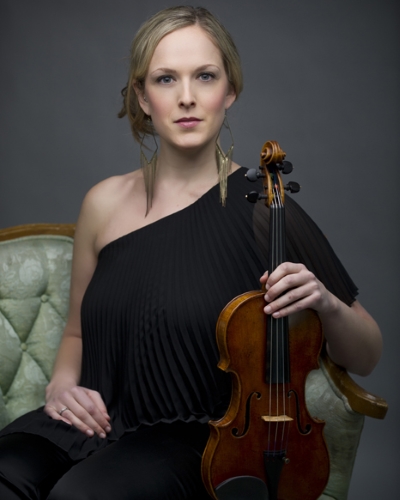“New” Prometheus Trio Sparkles
New violinist working beautifully. And Beethoven blows the other composers away.
The Prometheus Trio—violinist Margot Schwartz, cellist Scott Tisdel, and pianist Stefanie Jacob—was in fine form Monday evening at the Wisconsin Conservatory of Music as its members delivered a delightful mix of sentimentality, vigor, comedy, and color. Most impressively, the performance showed just how quickly really fine musicians can become a balanced and like-minded ensemble.
Throughout the program the three Prometheans distinguished themselves as individual artists. Schwartz plays with a vitality and sensitivity that belies her age and ironic grin. Tisdel’s warm, inviting sound and intelligent musicianship are guaranteed to illuminate the depth of the composer’s intent, and Jacob has a knack for creating a rhythmically solid and nuanced foundation of accompaniment, and stepping forward with stylish virtuosity for her solo passages. However, this concert was more about the ensemble than the individual.
The program began with Edvard Grieg’s Andante con moto in C Minor. This piece has only one movement, Largo–Allegretto, and it packs an emotional wallop. The piano dictates a brooding theme framed by a repetitive two-note “ta-da” chord progression. All three voices took turns sharing and parsing the thematic material, conveying emotion that was just this side of overwrought. Part of Grieg’s genius is how he relinquishes the dark-and-stormy-night motif to a tender melody that floats in a major key above a rhythmically unsettled accompaniment, and then avoids a strong downbeat until, at last, the cello anchors the theme with light pizzicato pulses. Balances, unison octaves, and thematic sharing were all superb.
The ensemble then turned its attention to the Trio in D Major, Op. 70, No. 1, “Ghost,” by Ludwig van Beethoven. Whenever Beethoven is performed on the heels of almost any other composer (even a high-quality composer such as Grieg), it becomes abundantly clear just how much better Beethoven was at composition than everyone else. His compositional structure is sophisticated and logical, the melodies are memorable (in this piece, entertaining too), and the layering of only three voices can vary from delicate to nearly symphonic. Between the exuberant opening theme and hopped-up scales and flying fingers, the first movement was a load of fun. The passionate Largo assai ed espressivo featured gorgeous violin and cello lines atop a murmur in the piano, and the Presto flew off faster than a prom dress, giving Jacob a chance to wow everyone with the extreme sport of Beethoven’s piano writing. The highly energetic playing of the trio created the impression that playing Beethoven is a deeply satisfying and thrilling thing to do.
Jacob’s deft touch changed the atmosphere in the room with the sublime opening of Maurice Ravel’s Trio in A Minor. Where the Grieg focused on sentimentality, the Beethoven on form, and the Shchedrin on quality musical gags, the Ravel was invested with color. Dampened tones with halos of harmonics grew to passionate outbursts in the Modéré. The Pantoum: Assez vif bedazzled with the orchestrated sparkle of his La Valse. The Passacaille: Trés large began in the deep end of the piano and moved through the cello and violin with a stately air. Impassioned unisons and open harmonies in the violin and cello lent the deep bass line in the piano an oriental gravity. The Final: Animé was pure fireworks. Amazing piano pyrotechnics and trilling string lines brought the delighted audience to its feet.
The Prometheus Trio closed the evening with an encore of Grieg’s Notturno, Op. 54, No. 4, arranged by Karl Rissland. A perfect bookend, played with charm and wistfulness. It was a lovely evening of music.
Review
-
New Musical a Life and Death Comedy
![Stephanie Beschta [Mrs. McCobb] and Shayne Patrick [Mr. McCobb] in RIP – A Matter of Life and Death. Photo by Stacy Kaat (www.stacykaat.com).](https://urbanmilwaukee.com/wp-content/uploads/2024/07/WEB-6056-185x122.jpg) Jul 19th, 2024 by Dominique Paul Noth
Jul 19th, 2024 by Dominique Paul Noth
-
Ouzo Café Is Classic Greek Fare
 May 23rd, 2024 by Cari Taylor-Carlson
May 23rd, 2024 by Cari Taylor-Carlson
-
‘The Treasurer’ a Darkly Funny Family Play
 Apr 29th, 2024 by Dominique Paul Noth
Apr 29th, 2024 by Dominique Paul Noth




















